Much has been told lately about affordable housing in Las Vegas and what it does mean for low-and middle-income families in a real estate market characterized by skyrocketed home prices, lack of housing inventory, high mortgage interest rates, and high inflation.
A severe housing inventory shortage is making it harder for low and middle-income families to find a place they can afford. Like in other major cities, the housing affordability crisis is real and deep in the Las Vegas metro area. Let’s go into the problem and explore a potential housing supply action plan.
Las Vegas is currently considered one of the most overpriced housing markets in the US.
What is affordable housing?
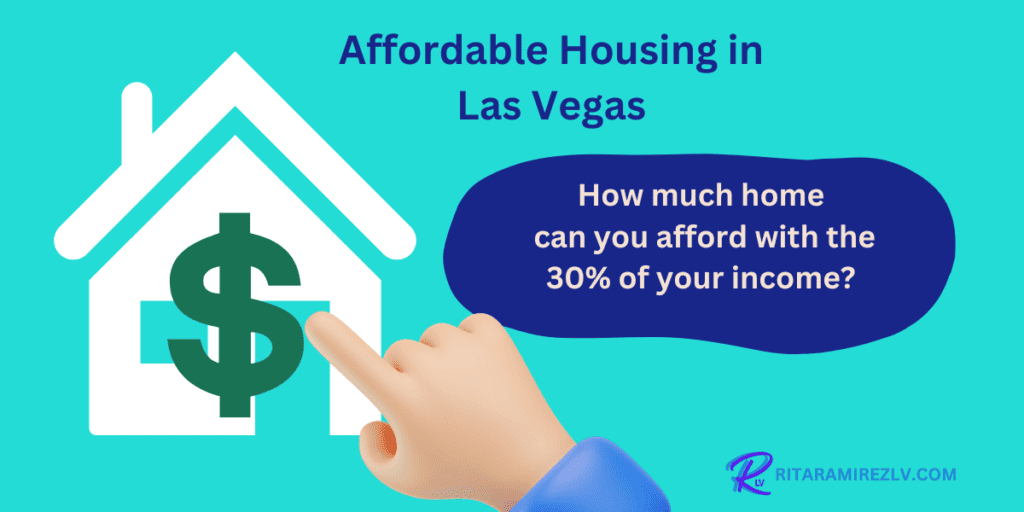
Affordable housing refers to living space units for people with a median household income as assessed by country, state, or region. While the term is often used interchangeably with terms like “low-income housing” and “budget-friendly housing,” its definition extends beyond housing for the economically disadvantaged.
In the US, the Department of Housing and Urban Development (HUD) defines affordable housing as properties that a family or individual can buy applying no more than 30% of the household’s gross income, including other housing costs that are associated with, as home insurance, property taxes, private mortgage insurance (PMI), and utilities.
When families pay more than 30% of their income for housing, they are cost-burdened, needing help to cover other necessities such as food, clothing, transportation, and medical care.
Factors Affecting affordable housing in Las Vegas.
There are many factors, but the most significant are home prices, the median income of the potential buyers and renters, mortgage interest rates, and housing inventory.
Let’s see in context what has happened in the Las Vegas metro area that is affecting housing affordability.
High Home Prices
Can you remember the crazy thing during the pandemic Covid 19 where you could see a line of potential homebuyers outside a single home for sale? That happened due to two factors, 1) people had the money to cover the down payment and the closing cost required to finalize the purchase, and 2) they already had a pre-approval letter for a loan when the mortgage interest rates reached a historically low point.
The demand for houses outpaced the housing inventory, and the competition among potential buyers to become [homeowners] was frantic.
The attractive conditions of the residential market in Las Vegas encouraged investors to enter playing hard, as they could even buy in cash displacing first-time buyers willing to reach [homeownership].
Basic economic principles were present, and higher demand made home prices rise.
Also, the disruption in the supply chain-increase housing costs-and the conflict in Ukraine has played a role in higher prices. Additionally, inflation hit the US economy- due to the millions of dollars given by the federal government to the people during the pandemic- Increasing product and service prices to the highest point in 40 years, an inflation of 9.1% year-to-year in June 2022.
High inflation affects everyone, but particularly families with low- and middle-income. Now more families are struggling to cover their expenses, let alone afford a home!
Fortunately, inflation is decreasing, which is good news for all. CPI arrived at a year-to-year of 4% in May 2023. But still, housing prices are not going down. On the contrary, housing prices have been going up again in the Las Vegas metro area since March 2023, after a price decrease from June 2022 to February 2023.
In the Las Vegas metro area for May 2023, the median price for homes rose to $442,124, while the median price for homes nationwide reached $396,100.
Income
Income for households and individuals is critical in order to determine the buying power of the prospective people wanting to participate in the real estate market.
What is the Household Median Income?
It’s the ‘middle value’ of what households are earning. Imagine if we lined families’ earnings from lowest to highest. The one in the center? That’s The median. The US Census Bureau calculates this figure, giving a snapshot of a region’s economic well-being.

High-interest mortgage rates
The rise of interest rates made by the Feds as a policy to tame inflation doesn’t determine the increase in the mortgage interest rate. How investors feel about the economy determines the market rate of mortgage rates. Have been many voices alerting about an imminent US recession in disregarding the positive indicators of the health of the American economy.
Nevertheless, the interest rates have been so high that for many families is not even thinkable to apply for a loan mortgage to buy a home! On June 29, 2,023, the 30-year fixed mortgage rate exceeded 7%.
Housing Inventory
Is the total housing units available to buy or rent in a particular market, and is interchangeable with the term “Housing Supply”
A long-term housing inventory shortage in the US has become more relevant since the pandemic, intensifying the affordable housing crisis.
Regarding the rental market, the National Low Income Housing Coalition, NLIHC, says that Nevada has a shortage of 83,994 affordable rental homes for extremely low-income renters. Remember that Las Vegas, Henderson, and North Las Vegas are the three major cities in Nevada. Hence, a significant percentage of the shortage is in the Las Vegas metro area. So, Las Vegas must find a solution.

Affordable Housing Shortage.
A recent article by the National Realtors Association, NAR, has been explicit about the lack of affordable housing for middle-income families.
“US Housing Market Needs More Than 300,000 Affordable Homes for Middle-Income Buyers“
According to the article, 51% of the households in the US earn $75,000 and less, which only allows them to afford to buy a home up to $256,000.
Traditionally, to maintain affordability, the housing expenses should be at most 30% of their income, which equates to a home priced around $256,000.
Affordable Housing Inventory in Las Vegas.
Following the criteria of the NAR article, and for illustration purposes, let’s assume that the median family income in the Las Vegas metro area is $75,000. What does it mean? About 50% of the families have a yearly income that equals or goes below the median income, and the other 50% earn above it.
How many affordable homes are available to buy with an asking price equal to or below $256,000 in the Las Vegas metro area?
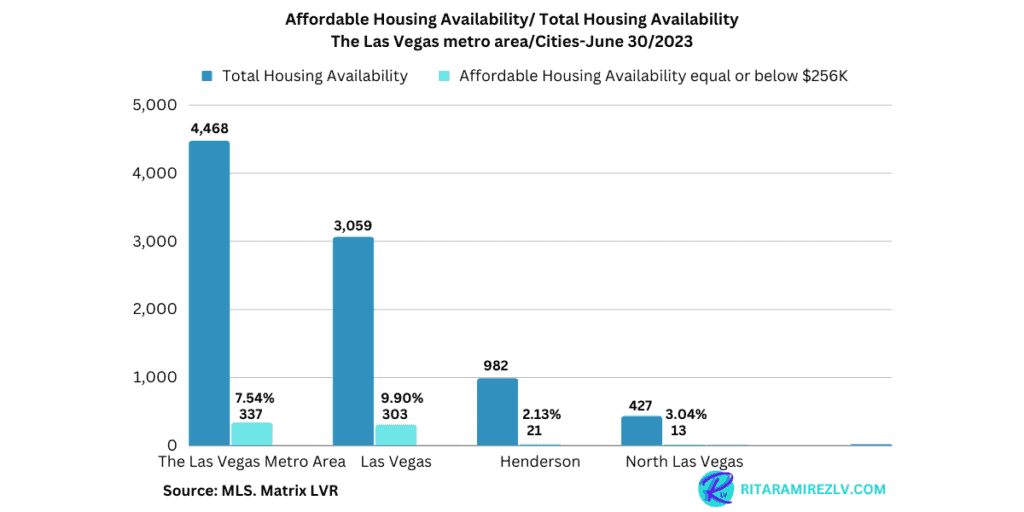
The NAR article also mentions that the people who earn up to $75,000 middle income can afford 23% of the total housing supply. In contrast, they could afford 50% of the housing inventory five years ago.
In the Las Vegas metro area, middle-income earners of $75,000 and below can afford 7.54% of the housing availability, 4,467 units on June 30, 2023.
How much income do you need to buy a home in the Las Vegas metro area for the median home price of $442K in June 2023?
You have to earn about $ 143,124 annually or $ 11,927 monthly.
Why Affordable Housing is important
Shelter is considered one of the basic physiological needs of all humans. Homeownership has been part of the American dream for many, particularly low- and middle-income earners. Currently, that dream is out of reach for more people.
Affordable housing impacts all of us in many ways you might not even realize:
- Health and Well-being: Believe it or not, affordable housing directly affects mental and physical health. When you meet rent or mortgage payments, you will likely be healthier and happier.
- Community Stability: Affordable housing encourages economic diversity and prevents the concentration of poverty, creating a more balanced and harmonious community.
- Economic Boost: This might surprise you! When affordable housing is accessible, it stimulates the local economy by freeing up consumers’ spending power and creating construction and property management jobs.
What happens when more people with low or median income can’t afford a home?
The long-term consequences of not having affordable housing could be undesirable but preventable.
Increased Rent Burden: Unable to afford homes, more families turn to rent, which pushes rental prices up, leading to a higher rent burden. According to Zillow in a report on June 2023 in the Las Vegas Valley, the median rent for all types of property and number of bedrooms is $ 2,035 in Las Vegas, $2,200 in Henderson, and $2,060 in North Las Vegas.
Homelessness: Sadly, the inability to afford a home can increase homelessness. We are seeing more people without housing in the Las Vegas metro area, and we can avoid considering what is happening in our neighboring state of California.
Economic Inequality: Become a homeowner is critical for families to build wealth and increase homeowners net worth. If fewer families can afford to buy a home, it can exacerbate economic inequality.
Affordable housing programs
The US Department of Housing and Urban Development (HUD) administers numerous programs available to help families unable to secure affordable housing in the private market.
Section 8 Housing Choice Voucher program. It is the most extensive federal program to help eligible low-income families rent private housing.
Public Housing: For eligible low-income families, older people, and disabled people, public housing offers affordable apartments.
The Low-Income Housing Tax Credit program promotes private investment in affordable rental housing.
Section 8 of the Housing Act of 1937, law created to help low-income people find affordable housing. The act has been updated many times since then. Still, the name ‘Section 8’ is a familiar reference for these federal housing assistance programs.
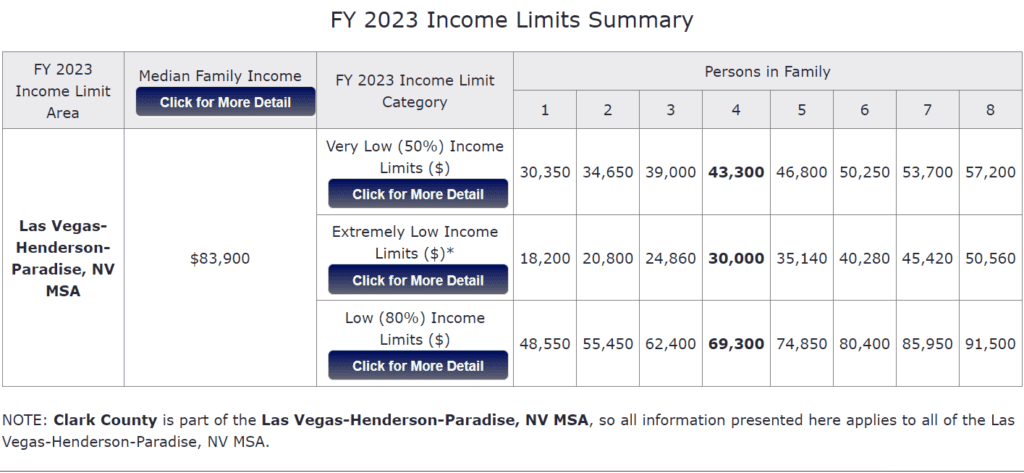
Affordable Housing Programs in Las Vegas
Section 8 Housing Choice Voucher: It’s funded by the US Department of Housing and Urban Development (HUD) and administered locally by the Southern Nevada Regional Housing Authority, a public housing agency (PHA). Eligible low-income families, older adults, and disabled people receive vouchers to help cover the cost of rental housing.
HOME Investment Partnerships Program: This program grants states and localities to build, buy, and rehabilitate affordable housing for rent or homeownership. The Nevada Housing Division administers the program.
Public Housing: Managed by the Southern Nevada Regional Housing Authority, this program offers rental help to low-income people, older adults, and people with disabilities.
The Nevada Housing Division (NHD) manages the programs Home Is Possible and Home First, funded by the state, to help first-time buyers to access homeownership, assisting with the down payment, the most significant expense when buying a home.
Qualified applicants must comply with the following guidelines:
- Be a first-time homebuyer (have not owned a home in the past three years)
- Have an income that does not exceed the Area Median Income limits set by County.
- Have a minimum credit score (FICO) of 640.
- Live in the home as your primary residence.
- Meet standard loan requirements.
- Complete a homebuyer education class.
- Contact a certified lender and realtor.
Each down payment assistance program has unique eligibility criteria, so it’s best to check their specific details to determine if you qualify. Funds for these programs can sometimes run out, so if you’re interested, it’s better to apply sooner rather than later. These programs are there to make housing more affordable, so don’t hesitate to use them.
Potential Housing Supply Action Plan:
Any potential housing supply action plan to tackle the pressing housing inventory shortage requires collaborative efforts and creative strategies involving federal and state government, the private sector, non-profit organizations, and community members.
Increase the housing Supply-A real solution.
The simplest solution to reduce the housing inventory shortage is to build more homes. But as we all know, things are more challenging than they seem. The key is not just to build more homes but to do it in a way that helps make housing affordable for families to rent and buy. Some things to consider:
1. Provide Financial Incentives: One approach is to attract more people to invest in building quality affordable housing units. Provide tax breaks or subsidies for investors and developers. If building affordable homes is more attractive, more builders will want to do it. Investing in more Affordable housing is not only good for society, but it is a solid business.
2. Simplify Processes and costs: Let’s face it, bureaucracy can be a significant roadblock. Streamline the licensing and permit processes, reduce unnecessary regulations and fees, and make it easier and quicker for builders to start their projects.
3. Land Utilization: Better land use could mean adjusting the zoning regulations to urban areas’ new social and economic reality. The housing inventory shortage demands creative solutions. It is essential to encourage higher-density housing in places where it makes sense, like changing some zoning for single-family homes into multi-family homes, such as duplexes, triplexes, and fourplexes. Think about repurposing some of the many vacant commercial properties into apartment buildings. Or think about creating tiny home parks similar to manufactured ones.
4. Investment Limitations: Consider putting some boundaries on investment properties. Suppose that investors scooped up many newly built houses to rent out. In that case, it reduces the supply of homes for families looking to buy. A possible strategy could involve limiting the number of homes an entity can own or providing additional incentives for homeowner-family-oriented housing construction.
Promote partnerships
Private developers and non-profits bring unique skills to tackle the affordable housing crisis. Developers leverage their capital and construction expertise. Non-profits excel in community outreach, securing philanthropic funding, and creating sustainable solutions tailored to community needs.
Public-private partnerships merge these strengths, with governments providing incentives like tax breaks or land access and private entities contributing their development expertise and investment capital. This collaboration can lead to faster, more efficient construction of affordable homes.
Numerous success stories underscore this potential.
The Denver Housing Authority’s Mariposa District, a public-private partnership, transformed a distressed public housing project into a vibrant, mixed-income community.
Non-profit Habitat for Humanity has successfully mobilized volunteers and future homeowners to build affordable homes.
Through innovative financing, private developer BRIDGE Housing in San Francisco has built over 16,000 affordable homes.
Finally but not least is the affordable housing program in Vienna, Austria. The city and non-profit housing associations build and manage these homes. It’s a model of inclusivity and community that many cities could learn from.
These successes show how blending resources, expertise, and commitment from all sectors is the way to solve critical social issues. Implementing these strategies can increase the housing supply and ensure that affordable housing can be a reality for all.
To wrap things up
The country is experiencing an affordable housing crisis that is particularly prevalent in the Las Vegas metro area because of the housing supply shortage.
This reality is becoming a formidable challenge for families earning low to middle incomes. To tackle this, we need innovative thinking, collective effort, and a solid housing supply action plan that prioritizes affordable homes in the long term.
Las Vegas has already made its mark as a world-class leader in hospitality and entertainment. Now, it’s time to lead the charge in providing affordable housing for its residents. The conversation continues further. Let’s keep the dialogue ongoing, connect with city officials, and push for meaningful change because everyone in our vibrant city deserves a place to call home.
Additional Links

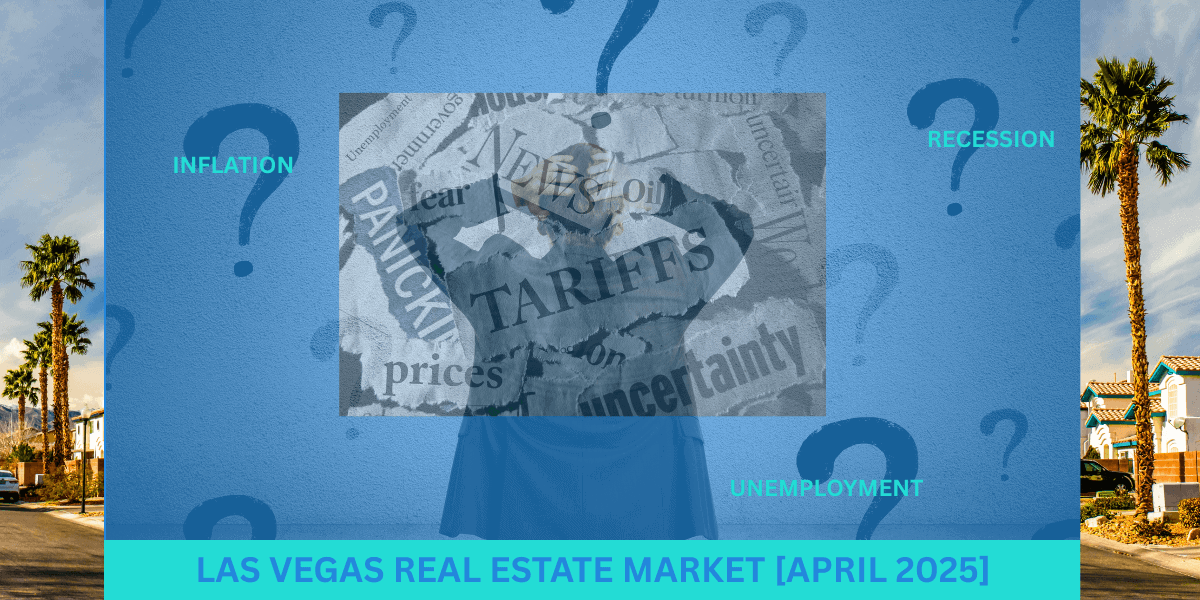
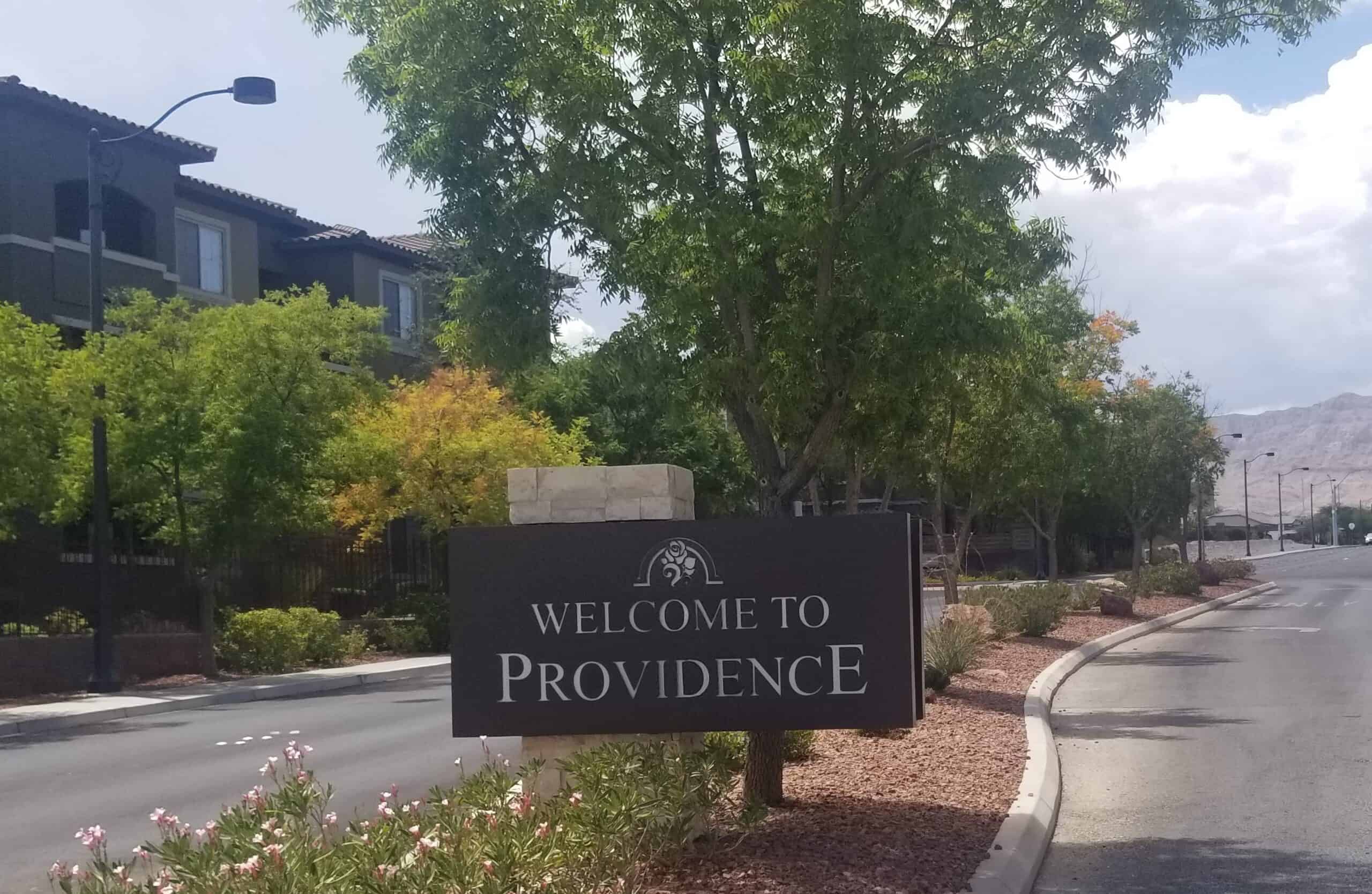
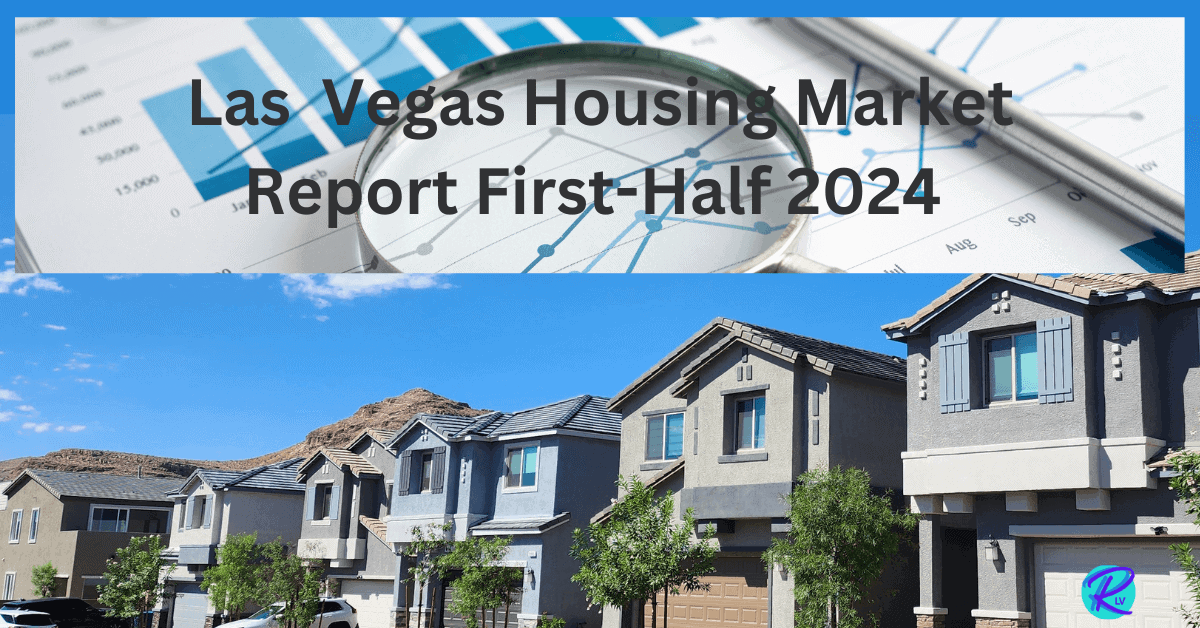
![Las Vegas Real Estate Overview [2023]](https://ritaramirezlv.com/wp-content/uploads/2022/10/Las-Vegas-Real-Estate-Overview-2023-.png)